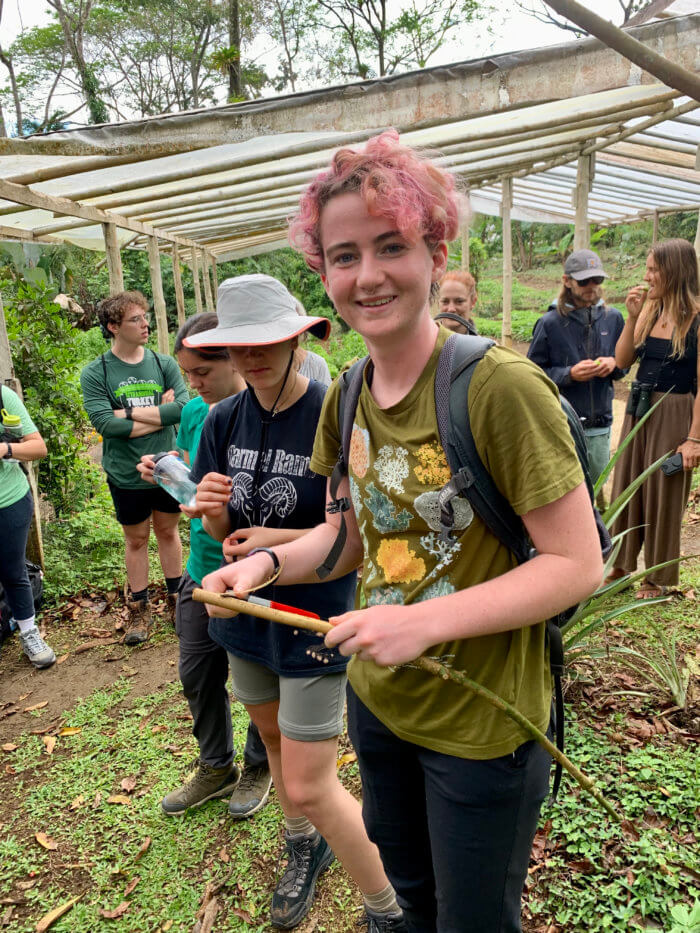Well, it wasn’t March 4th, but our souls commanded us to march through the farm with lots of friends, new and old. Two regenerative farming experts, Gaabi Hathaway and Zach Wolf, visited us from the renowned Caney Fork Farms in Tennessee, and Mary Little and her colleagues brought us a busload of students from the School for Field Studies. The weather was, of course, perfect for a big farm tour, and our permaculture wizard Scott Gallant of Porvenir Design was eager to explain how we accomplish regeneration through syntropic agriculture.
As the day begins at the farm you’ll often be asked “cómo amaneció?” It’s often translated as “how are you this morning,” but a more poetic meaning is “how did you greet the dawn?” And on this day, we greeted the dawn by caring for vanilla flowers in search of pollination.

There are plenty of emerald-green orchid bees at our farm, but the natural process is inefficient if the goal is a robust vanilla-bean harvest. Vanilla flowers are only open to pollinators for about 4 hours, and the plants don’t need to have lots of beans. After all, each bean contains thousands of seeds, and it takes a lot of energy to produce the long beans. We thus take matters in our (or at least Scott’s) skillful hands, pollinating just a few flowers per vine.


Pollination done, and now on to greet the faculty and students from Costa Rica’s branch of the School for Field Studies. We introduced the group to Luna Nueva’s mission, which is to demonstrate that regenerative agriculture in the tropics both produces ample crop yields and integrates excess atmospheric CO2 back into the living-soil matrix. In other words, it promises to both feed humans and reverse climate change!
First stop with the group was our “food forest,” where we densely plant food-producing trees, bushes, and perennial plants. Regenerative agriculture does not have a “one size fits all” approach – every permutation of farmer goals, soil types, and growing zones will influence what works best to produce food and rebuild damaged ecosystems. But while there is no orthodoxy, there are some general principles, such as keep the ground covered and undisturbed as much as possible and avoid monoculture. In other words, in our ecosystem we should produce food like a forest, much like ancient cultures did when creating what are called anthropogenic forests.

Some of our farm has become an experimental site for syntropic farming. There’s no simple definition of this system that was created by Ernst Götsch in Brazil, but our farmers have studied the system and adapted it to our fields of new cacao production. The system is not planted as densely as our food forested areas, so while the cacao trees in this area are still “understory,” there’s more light reaching them to optimize production. It’s farming like a forest but tweaked a bit to produce more fruits. Regenerative? Well, we’ve taken baseline soil carbon measurements and will return over time to gauge what we’re sure will be robust soil-carbon improvements.

The School for Field Studies group was curious about every aspect of our farming – and our crops. No farm tour is complete without lots of tasting:





Some of us then veered off to see our “girls on grass” – our dairy herd on one of our pastures.

And then we end with the food of the gods, chewing on the sweet flesh of a cacao fruit.

There’s nothing that can follow fresh cacao, so we ended the tour content with the flavors of a regenerated forest. Pura Vida!

